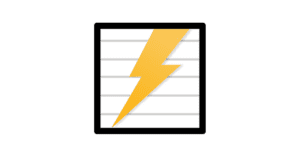For years, you’ve likely heard the dictum, “Never use passive voice!” But there are exceptions – especially when it comes to academic/research writing. That being the case, what, when, and how should the passive voice be used?
In research writing, clarity and precision are paramount. One of the most common debates among scholars and students alike is whether to use the passive voice. While some argue that passive constructions can make writing more formal and objective, others believe that it can lead to vague and wordy sentences. To navigate this linguistic minefield, it’s important to understand what passive voice is, when to use it, and how to use it effectively in your academic writing.
What Is Passive Voice?
Passive voice occurs when the subject of the sentence receives the action rather than performing it. In passive constructions, the object of an action comes before the verb, and the doer of the action (the agent) may be omitted or placed after the verb in a prepositional phrase.
Active Voice Example:
- The researcher conducted the experiment.
Passive Voice Example:
- The experiment was conducted by the researcher.
In the active voice, the subject (the researcher) performs the action (conducted), while in the passive voice, the action (was conducted) is received by the subject (the experiment). Notice how the emphasis shifts from the doer of the action to the action itself or the object affected by the action.
When to Use Passive Voice
Although academic writing often favors active voice for its directness and clarity, there are specific situations where passive voice is not only acceptable but also preferred. Understanding when to use passive voice can enhance the quality of your academic writing.
1. Emphasizing the Action or Result
In scientific and technical writing, the focus is often on the experiment, results, or findings rather than the person who conducted the research. In such cases, passive voice is appropriate to emphasize the action or result.
- The data was analyzed using statistical software.
- The hypothesis was tested in a controlled environment.
2. Maintaining Objectivity
Academic writing strives for objectivity, and passive voice can help achieve this by removing the personal pronoun “I” or “we” from the text. This can make the writing appear more formal and less subjective.
- The solution was heated to 100 degrees Celsius.
- The results were interpreted according to established guidelines.
3. Avoiding Ambiguity When the Actor Is Unknown or Irrelevant
In some cases, the doer of the action may be unknown or irrelevant to the discussion. Passive voice allows you to omit the agent, keeping the focus on the action itself.
- The document was signed yesterday. (The person who signed it is either unknown or unimportant in this context.)
- The theory has been widely accepted. (Who accepted the theory is less important than the fact that it is accepted.)
How to Use Passive Voice Effectively
While passive voice has its place in academic writing, overusing it can lead to vague, wordy, or monotonous prose. To use passive voice effectively, consider the following tips:
1. Balance Active and Passive Voice
Strive for a balance between active and passive voice in your writing. Use active voice when clarity and conciseness are needed, and reserve passive voice for situations where emphasis on the action or object is more appropriate.
- Active: We conducted the experiment to test the hypothesis.
- Passive: The experiment was conducted to test the hypothesis.
By balancing the two, you can maintain a clear and engaging writing style while still emphasizing the necessary aspects of your research.
2. Use Passive Voice to Highlight Important Information
When using passive voice, ensure that the most important information in your sentence comes first. This often means placing the result, action, or subject of the study at the beginning of the sentence.
- The chemical compound was discovered during the 20th century.
- The samples were collected from three different locations.
3. Be Concise and Avoid Redundancy
Passive voice can sometimes lead to wordy or redundant sentences. To avoid this, keep your sentences concise and eliminate unnecessary words.
- Wordy: The experiment was carried out by the research team in order to test the hypothesis.
- Concise: The hypothesis was tested by the research team.
Always aim to convey your message as clearly and directly as possible.
Conclusion
Passive voice in academic writing is a tool that, when used appropriately, can enhance the clarity, objectivity, and focus of your work. By understanding what passive voice is, when to use it, and how to use it effectively, you can improve the quality of your academic writing. Remember to balance passive and active voice, use passive constructions to emphasize important information, and keep your writing concise. With these strategies, you’ll be able to navigate the nuances of passive voice with confidence and precision.







